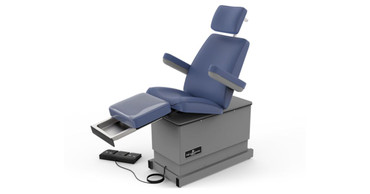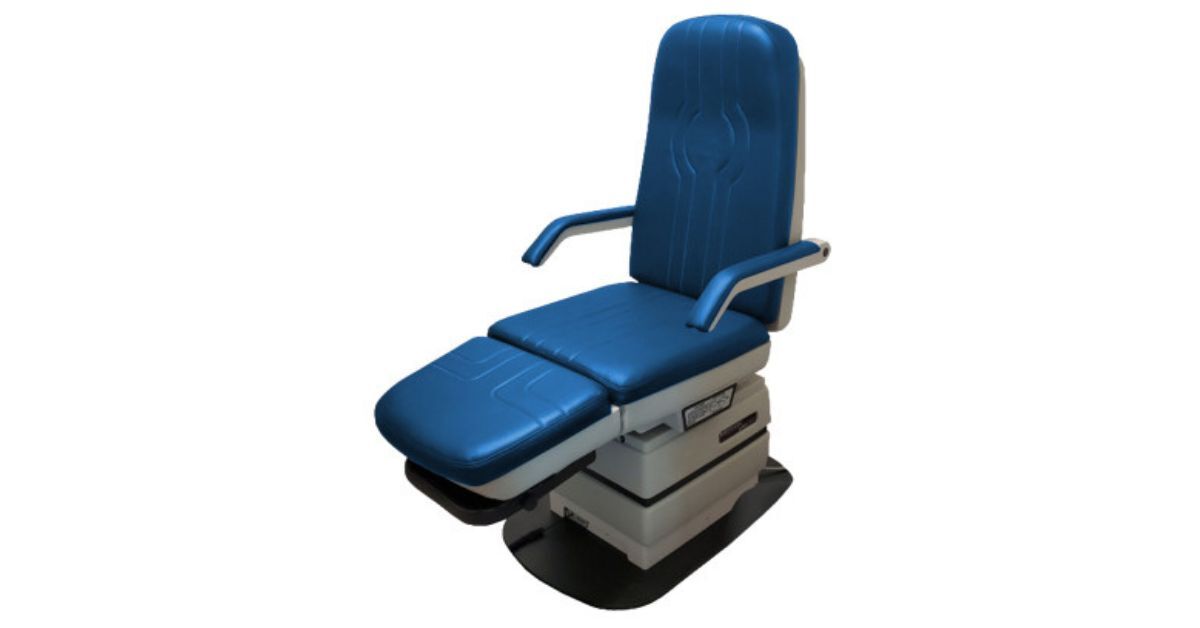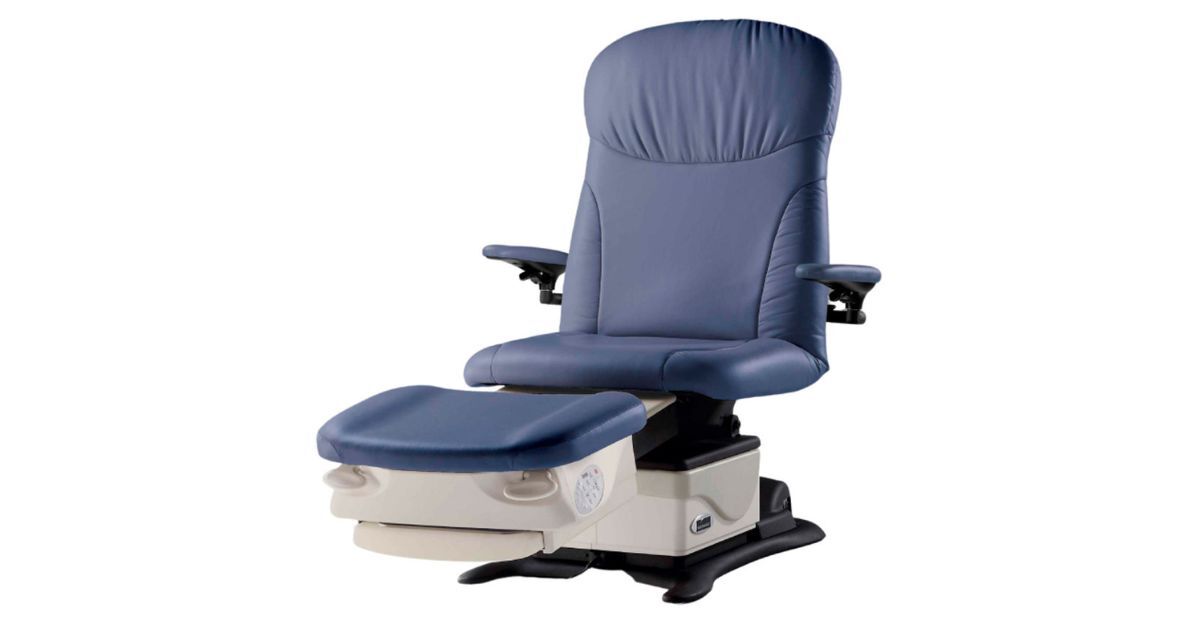
Avoid These Mistakes When Buying Used Podiatry Chairs
Posted by Cevi Med on 12th Aug 2025
Purchasing used medical equipment is a smart financial decision for healthcare practices. Podiatry chairs, in particular, are complex pieces of equipment that must meet strict safety standards to provide comfort to patients and practitioners.
Thorough research into the chair’s quality can save you thousands of dollars in repairs, replacements, and compliance issues. The wrong choice could lead to breakdowns, uncomfortable patients, and safety hazards that put your practice at risk. If you’re in need of new equipment, be sure to avoid these mistakes when buying used podiatry chairs.
Common Uses for Podiatry Chairs in Medical Settings
Podiatry chairs are versatile pieces of equipment that serve multiple purposes beyond traditional foot care:
- Primary care offices: General practitioners use podiatry chairs for routine foot examinations, wound care, and minor procedures.
- Specialized podiatry clinics: These facilities rely heavily on podiatry chairs for everything from basic nail care to complex surgical procedures.
- Hospitals: Inpatient and outpatient departments use podiatry chairs for diabetic foot care, post-surgical follow-ups, and emergency foot and ankle treatments.
- Physical therapy centers: Rehabilitation facilities use podiatry chairs for lower extremity treatments, wound care, and biomechanical assessments.
- Long-term care facilities: Nursing homes and assisted living centers use podiatry chairs that accommodate patients with mobility limitations.
Mistake 1: Neglecting To Inspect the Chair Thoroughly
One of the most critical errors buyers make is conducting only a superficial visual inspection. Used medical equipment can have hidden damage that is unsafe and unstable.
Examine the upholstery for tears, stains, and wear that could harbor bacteria or compromise infection control protocols. Check all moving parts, including hydraulic systems, electric motors, and adjustment mechanisms. Look for rust, corrosion, or unusual wear patterns that might indicate previous problems.
Mistake 2: Ignoring the Chair’s Maintenance Records
A podiatry chair’s maintenance history provides valuable insights into its condition and reliability. Chairs with regular servicing typically last longer than chairs without routine care.
Request detailed service records. The information should explain the date and the scope of the maintenance tasks. Pay attention to patterns that might indicate recurring problems or neglected maintenance issues.

Mistake 3: Overlooking the Warranty or Return Policy
Many buyers focus solely on the purchase price without considering post-sale support. Even used medical equipment should come with some form of warranty or return policy to protect your investment.
Reputable dealers are likely to provide limited warranties on refurbished equipment. The added protection commonly covers major components and the chair’s overall functionality for a limited time frame. This feature is a great way to save money if problems arise shortly after purchase.
Mistake 4: Failing To Verify the Chair Meets Current Safety Standards
Medical equipment safety standards evolve over time, and older chairs may not meet current requirements. Using noncompliant equipment can create liability issues and potentially violate regulatory requirements.
Research the relevant safety standards for podiatry chairs in your jurisdiction. In the United States, medical devices must meet FDA requirements, while other countries have their own regulatory frameworks.
Mistake 5: Not Comparing Prices From Multiple Vendors
Price comparison is essential when purchasing used medical equipment, as costs can vary significantly between vendors. Different sellers may have varying overhead costs, refurbishment standards, and profit margins.
Contact multiple dealers and request quotes for similar equipment. Compare chairs with similar features, conditions, and warranty terms. A low price might not be a better deal if the chair requires extensive repairs or the vendor doesn’t offer a warranty.

Mistake 6: Skipping a Test Run To Check the Chair’s Functionality
Never purchase a used podiatry chair without thoroughly testing all its functions. A hands-on evaluation can reveal hidden problems that a visual inspection cannot detect.
Test all adjustment mechanisms, including height, backrest angle, leg rest position, and rotating and tilting functions. The movements should be smooth, and the chair should hold positions securely without drifting or slipping.
Mistake 7: Forgetting To Inquire About the Chair’s Age and Usage
Chairs used in high-volume practices may show more wear than those used infrequently. Ask about the chair’s original purchase date. Try to determine how many years of service the chair endured.
Chairs nearing the end of their useful lifespan may require more frequent repairs. If the product you’re viewing is very old and in rough shape, it’s best to move on and search for another chair.
Mistake 8: Disregarding Patient Comfort and Ergonomics
Patient comfort directly affects your practice’s reputation and treatment outcomes. Uncomfortable patients may avoid necessary care or have negative experiences that impact your practice’s success.
Evaluate the chair’s padding, support, and adjustability from a patient’s perspective. Consider the diverse needs of your patient population, including elderly patients, people with mobility issues, and individuals of varying sizes.
Mistake 9: Neglecting To Consider Transportation and Installation Costs
The purchase price of a used podiatry chair represents only part of your total investment. Transportation, installation, and setup costs can add significantly to your overall expenses.
Medical equipment often requires specialized transportation to prevent damage during transit. Standard shipping methods may not provide adequate protection for delicate components and mechanisms.
Mistake 10: Rushing the Decision Without Consulting Others
Purchasing decisions made under pressure often lead to buyer’s remorse and costly mistakes. Take time to consult with colleagues, staff members, and technical experts before committing to a purchase.
Clinical staff can provide valuable insights into features and functionality that matter most in daily practice. They may identify needs or preferences you hadn’t considered or point out potential problems with certain models.
The Benefits of Purchasing Refurbished Medical Equipment
When done correctly, buying used can provide excellent value and support your practice’s financial health. Saving money on one purchase can help you invest the money into other areas of the practice.
Many refurbished chairs are models that have demonstrated long-term reliability in clinical settings. Choosing equipment with an established track record makes it easier to avoid issues that arise with newly released products.
Reputable dealers thoroughly inspect, repair, and update refurbished equipment to meet current standards. The process includes replacing worn components, updating software, and complying with current safety requirements.
Invest in Your Practice’s Future
Used equipment requires careful consideration of multiple factors beyond the initial purchase price, especially in medical settings. Avoiding the common mistakes when buying used podiatry chairs will ensure you make an informed decision that serves your practice well.
At Cevi Med, we know how important quality is to a practice’s long-term success. If you’re looking for podiatry chairs for sale, view our extensive selection. We offer a quality guarantee, so that you can invest in equipment that offers you peace of mind!
